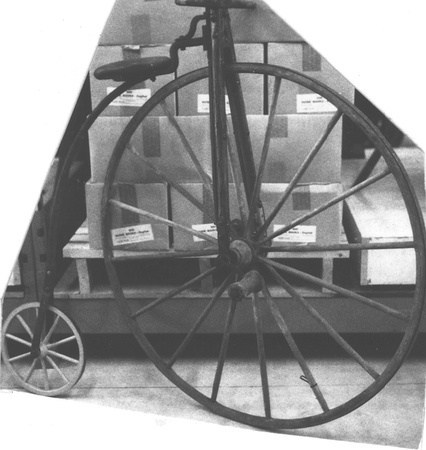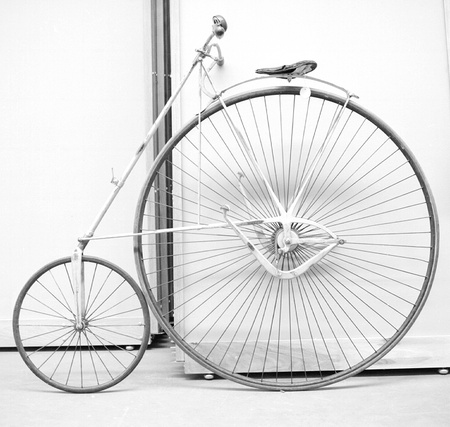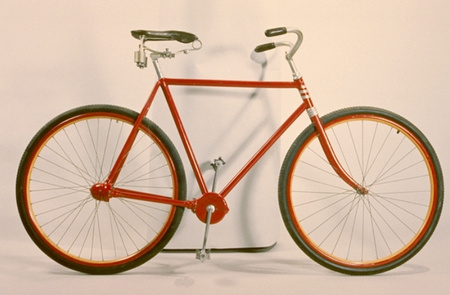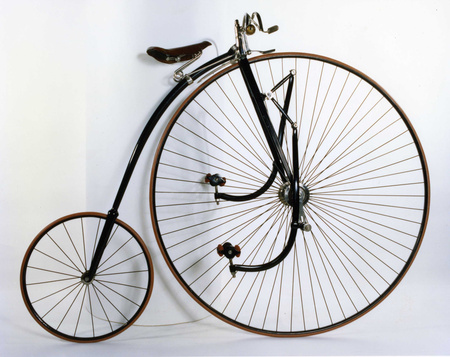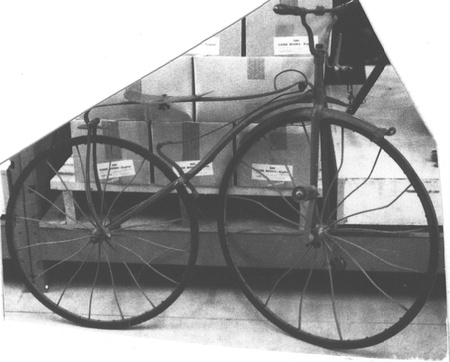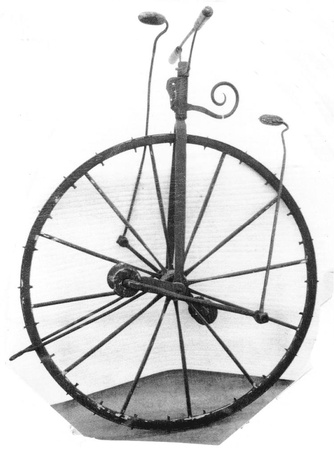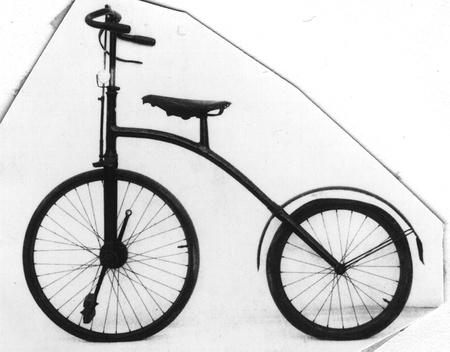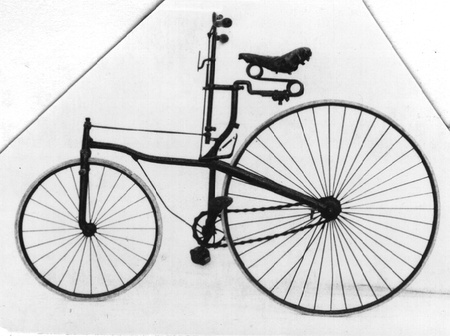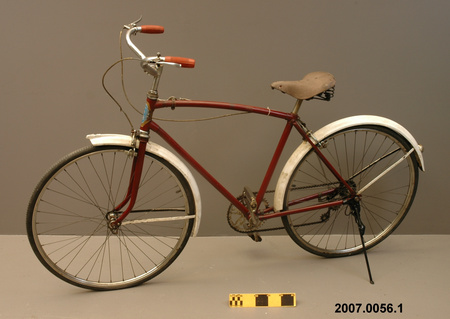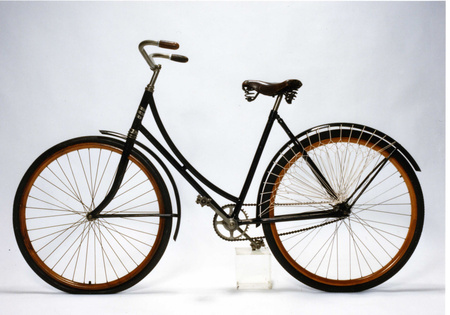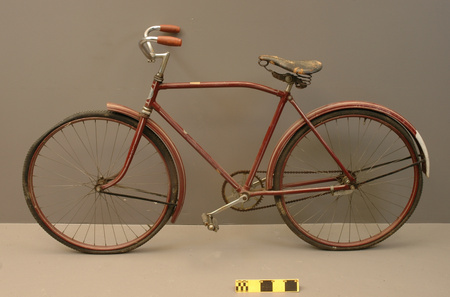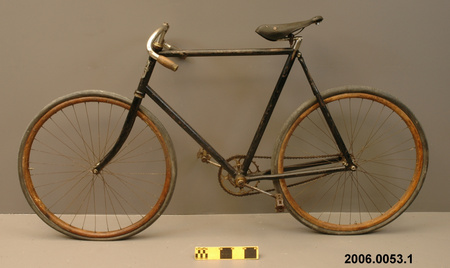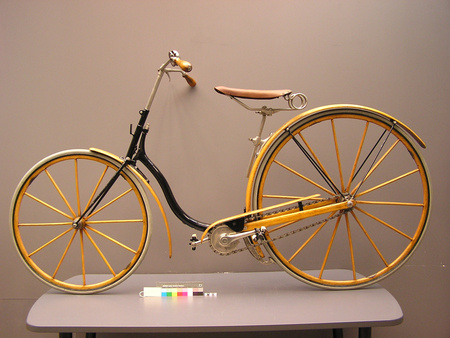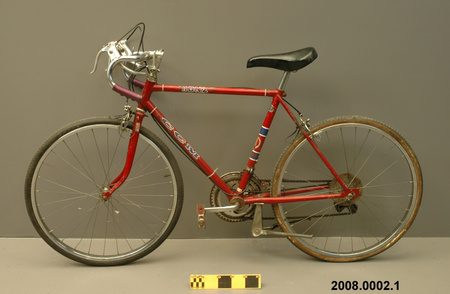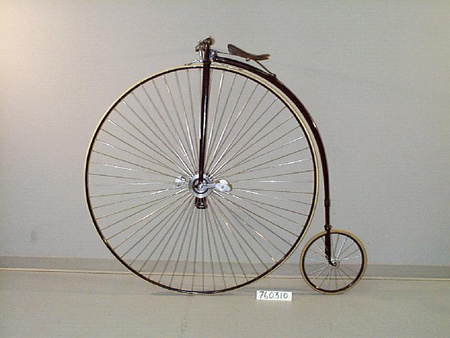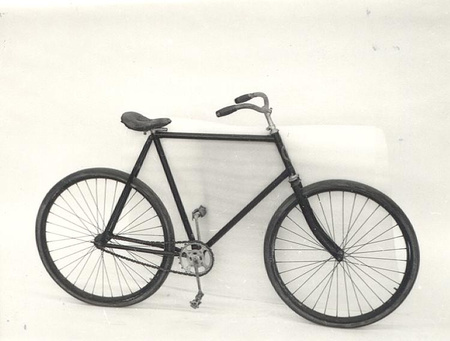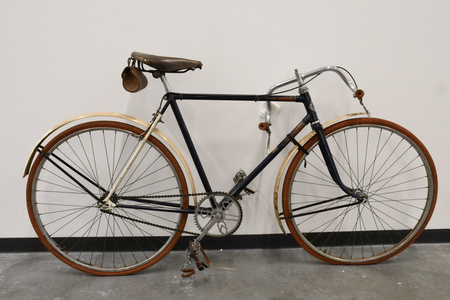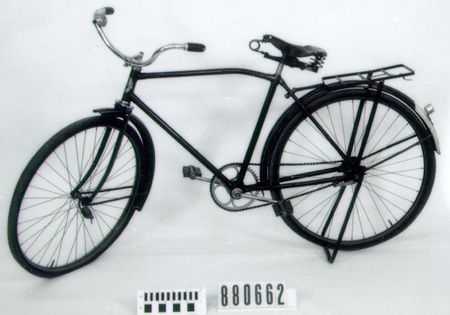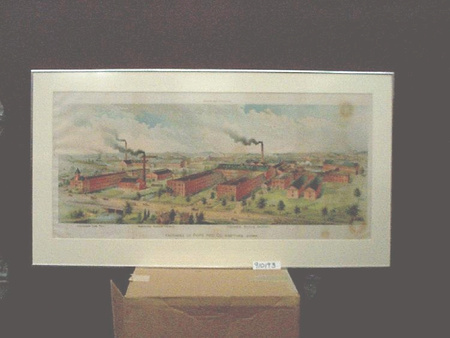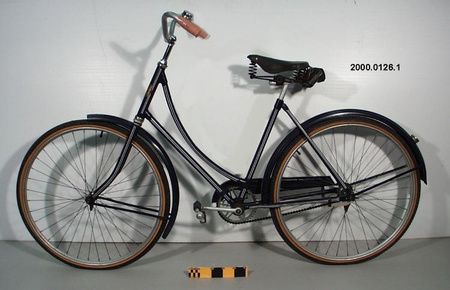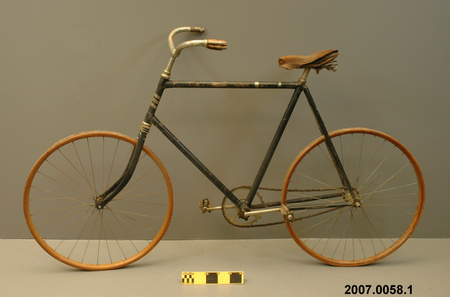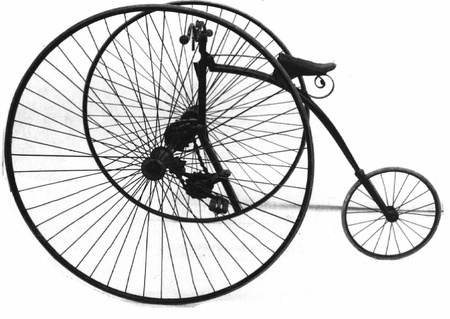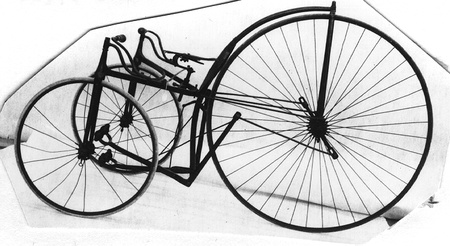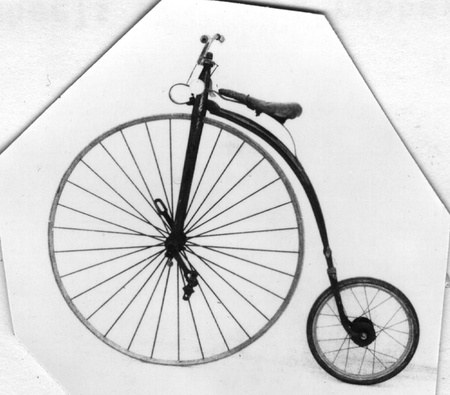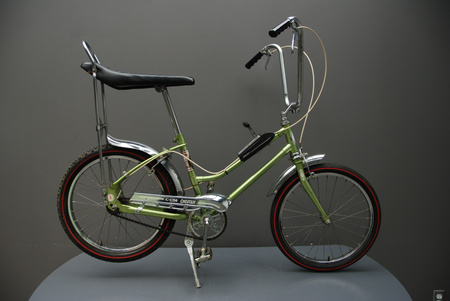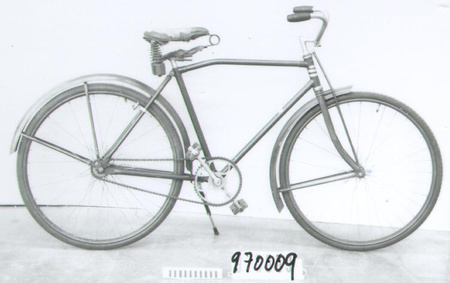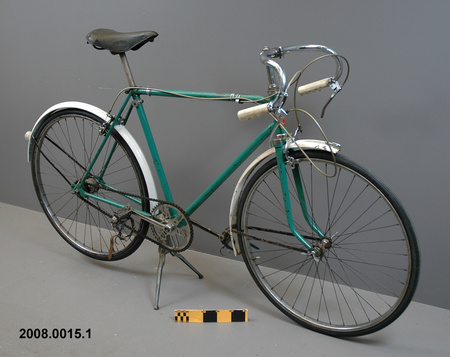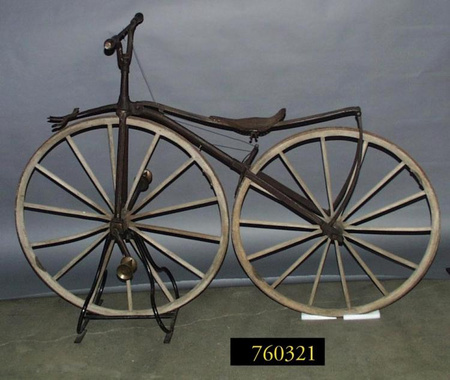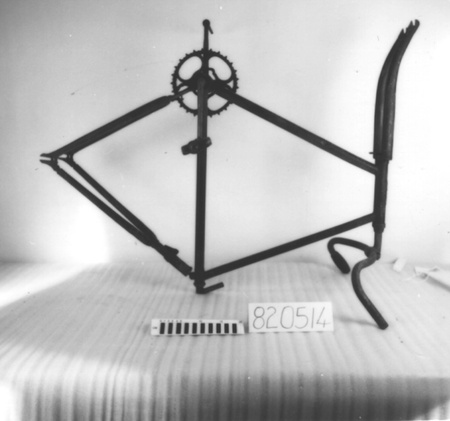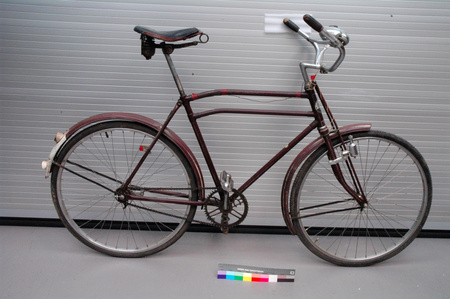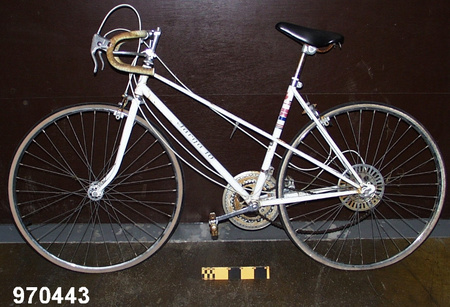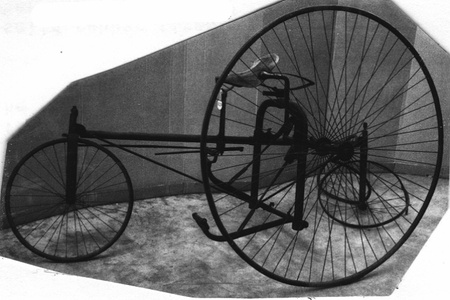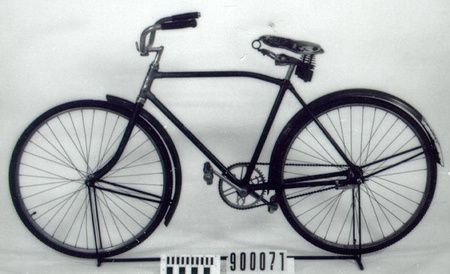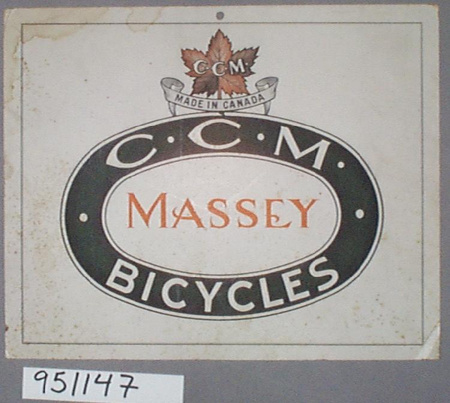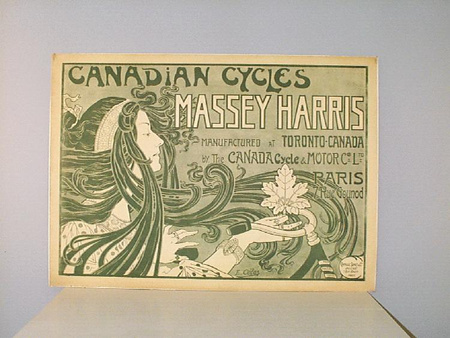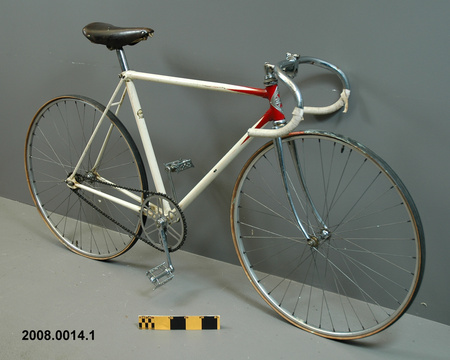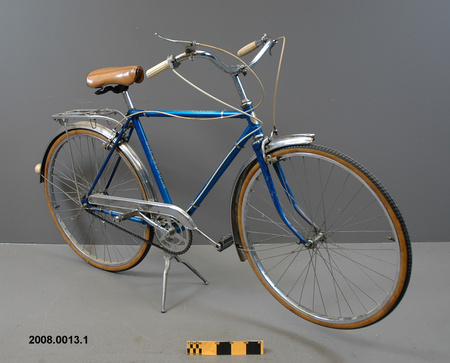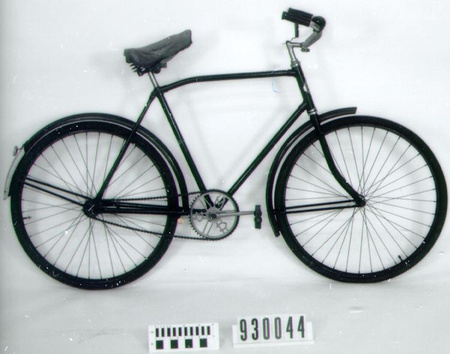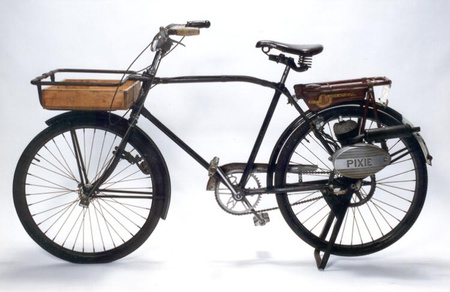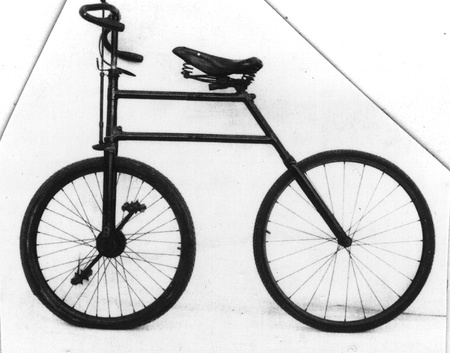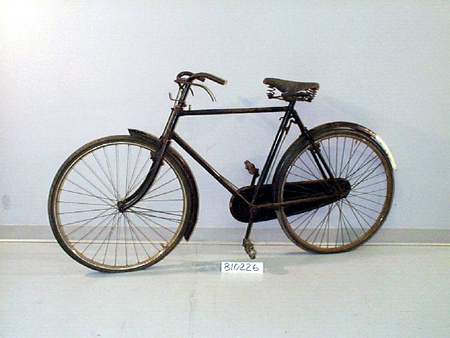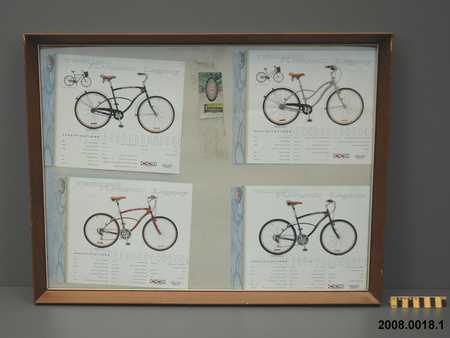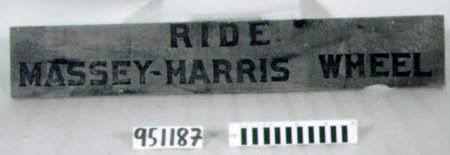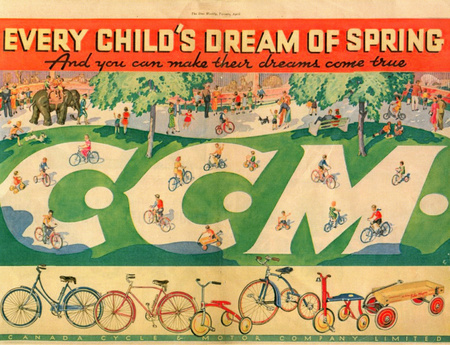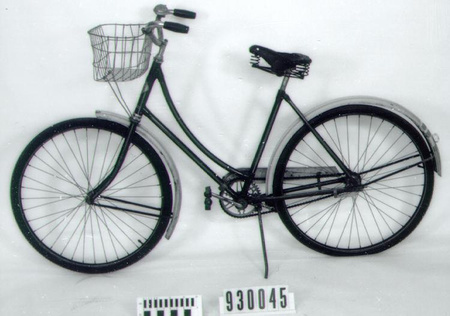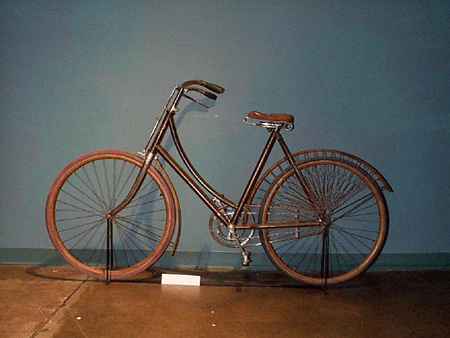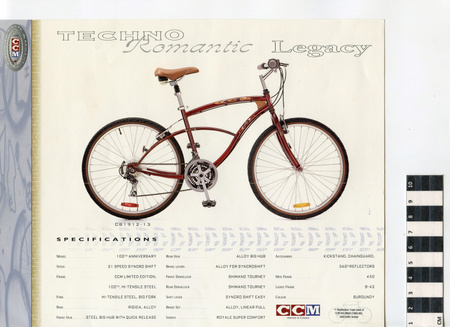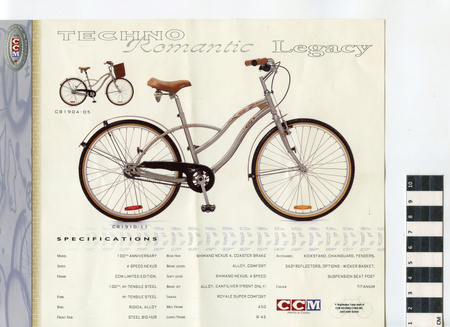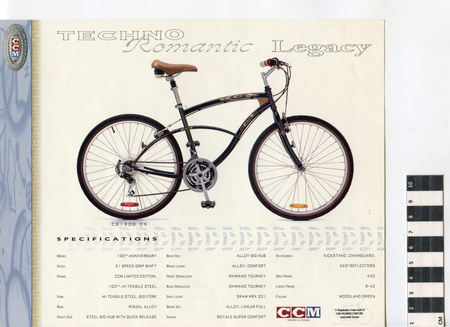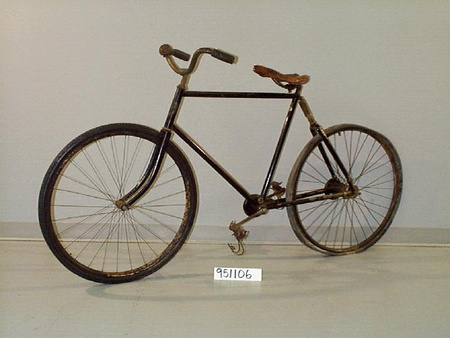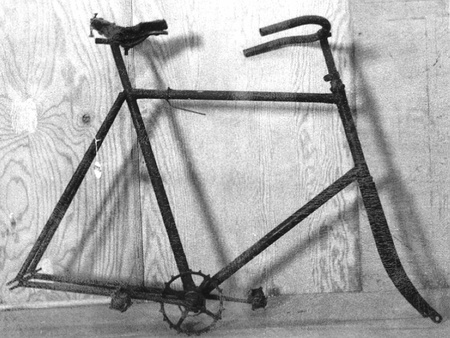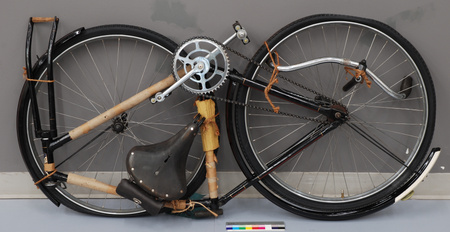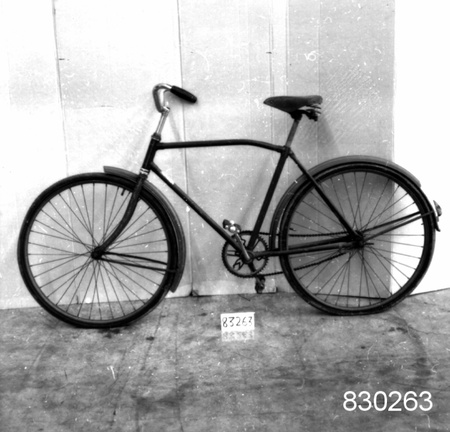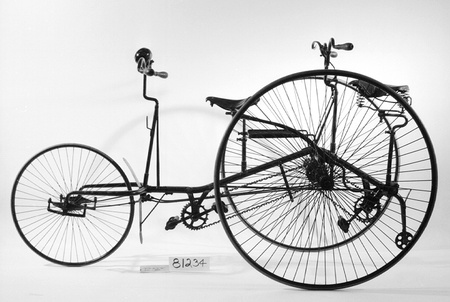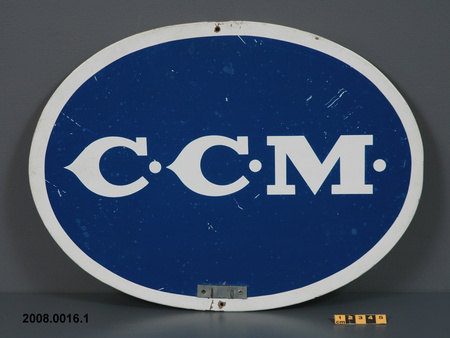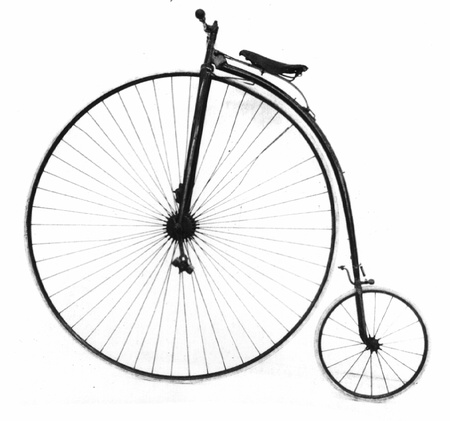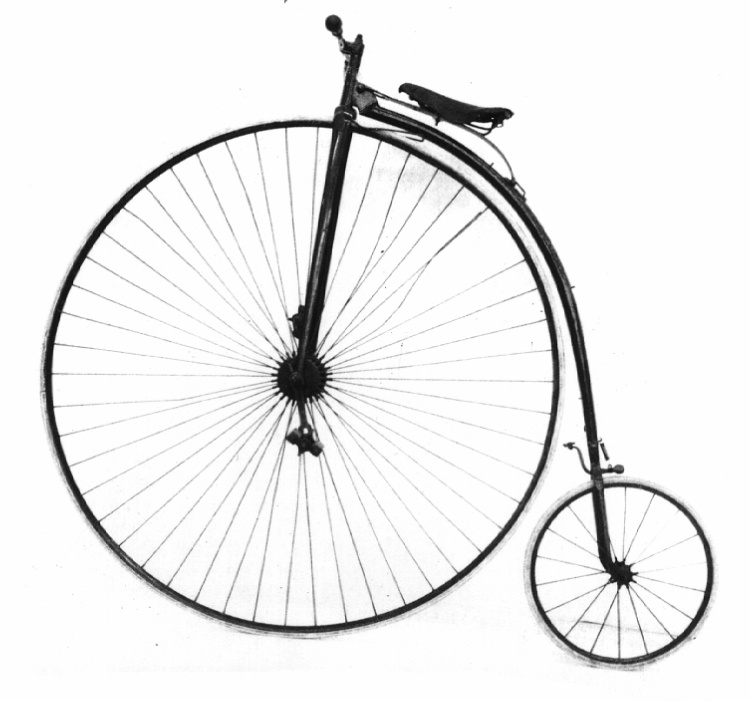Bicycle
Use this image
Can I reuse this image without permission? Yes
Object images on the Ingenium Collection’s portal have the following Creative Commons license:
Copyright Ingenium / CC BY-NC-ND (Attribution-NonCommercial 4.0 International (CC BY-NC 4.0)
ATTRIBUTE THIS IMAGE
Ingenium,
1981.0207.001
Permalink:
Ingenium is releasing this image under the Creative Commons licensing framework, and encourages downloading and reuse for non-commercial purposes. Please acknowledge Ingenium and cite the artifact number.
DOWNLOAD IMAGEPURCHASE THIS IMAGE
This image is free for non-commercial use.
For commercial use, please consult our Reproduction Fees and contact us to purchase the image.
- OBJECT TYPE
- ordinary
- DATE
- 1878
- ARTIFACT NUMBER
- 1981.0207.001
- MANUFACTURER
- Bayliss Thomas & Co.
- MODEL
- Excelsior
- LOCATION
- Coventry, England
More Information
General Information
- Serial #
- N/A
- Part Number
- 1
- Total Parts
- 1
- AKA
- N/A
- Patents
- N/A
- General Description
- METAL FRAME/ METAL WHEELS W. SOLID RUBBER TIRES/ WOODEN HANDGRIPS/ LEATHER SADDLE/ RUBBER PADS ON PEDALS
Dimensions
Note: These reflect the general size for storage and are not necessarily representative of the object's true dimensions.
- Length
- 167.0 cm
- Width
- 51.0 cm
- Height
- 146.0 cm
- Thickness
- N/A
- Weight
- N/A
- Diameter
- N/A
- Volume
- N/A
Lexicon
- Group
- Non-motorized Ground Transportation
- Category
- Cycles & cycling
- Sub-Category
- N/A
Manufacturer
- AKA
- Bayliss Thomas
- Country
- England
- State/Province
- Unknown
- City
- Coventry
Context
- Country
- Unknown
- State/Province
- Unknown
- Period
- Unknown
- Canada
-
This Excelsior bicycle inspired the creation of CCM due to its adoption by a popular American bicycle manufacturer, Pope Manufacturing Co. Pope had already expanded into Canada when Massey Harris purchased the Columbia bicycle patent from Pope in the 1890s. Massey Harris went on to became one of the largest bicycle manufacturing companies in Canada, opening their shop on King Street, Toronto and clawing away at the American domination of the Canadian bicycle market. When the ABC expanded into Hamilton and Toronto, Massey Harris would become the leader of multiple Canadian companies that formed the CCM company, a Canadian monopoly on bicycle manufacturing. Ce bicycle Excelsior à inspire la création du CCM quand le manufacturier américain Pope Manufacturing Co. a adopté le modèle. La compagnie Pope avait déjà fait son expansion vers le Canada quand Massey Harris a acheté le brevet conçus par Pope pour le bicycle Columbia. Massey Harris a acheté le brevet dans les années 1890s et ils sont rapidement devenus le plus gros fabriquant de bicycle du pays. Leur magasin était situé sur King Street à Toronto. Massey Harris a diminué la domination du marché par des compagnies américaines en achetant plusieurs compagnies canadiennes pour construire CCM. CCM a eu le monopole sur la fabrication des bicycles au Canada en grande partie grâce aux décisions opérationnelles de Massey Harris. - Function
-
This variant of the velocipede functions as a means of transportation for a rider. Une variante du vélocipède qui fonctionne comme un moyen de transport pour un coureur. - Technical
-
The Excelsior was a non-geared evolution on the velocipedes of the late 1860s. First, the wire spokes allowed the manufacturers to save on weight all the while constructing a rigid all-metal velocipede. As a result, the diameter of the wheel could be expanded and thereby allowing the machines to run faster. This also led to another advance in velocipede technology with respect to its function- The wheel made a revolution when the rider completed their own pedal revolution. The bigger wheel allowed the bicycle to travel further, because the circumference of the wheel was overall longer than the previous models. Le bicycle Excelsior était un vélocipède sans roues d'engrenages conçu à la fin des années 1860s. Les rayons métalliques permettaient aux fabricateurs d'économiser sur le poids du bicycle tout en construisant un vélocipède rigide qui était complètement fait en métal. Le diamètre de la roue pouvait être augmenté grâce à sa composition et ceci a permis le bicycle et le coureur de voyager à une vitesse supérieure. Les mécanismes de la roue ont aussi vue des améliorations. Une rotation de roue ce faisait quand le coureur complétait sa propre rotation de roue avec l'aide des pédales. Le fait que le bicycle avait une plus grande roue a permis le bicycle de voyager plus loin grâce à la circonférence supérieure par rapport à d'autres modèles. - Area Notes
-
Unknown
Details
- Markings
- MFR'S NAME STAMPED INTO SPRING; OVAL AREA AROUND NAME LEFT UNPAINTED; TRACES OF GOLD PAINT ON LETTERING/ MUNDY COLLECTION PLATE ON STEM: 'A.C. MUNDY, PETERBOROUGH VINTAGE c.c.'/ '29' HANDPAINTED ON STEM (PROBABLY A MUNDY NUMBER)
- Missing
- CORRECT SADDLE(?)
- Finish
- REPAINTED MAROON/ SADDLE - BLACK/ HANDGRIPS- STAINED DARK BROWN PEDAL RUBBER & TIRES- WHITE
- Decoration
- N/A
CITE THIS OBJECT
If you choose to share our information about this collection object, please cite:
Bayliss Thomas & Co., Bicycle, circa 1878, Artifact no. 1981.0207, Ingenium – Canada’s Museums of Science and Innovation, http://collection.ingenium.ca/en/id/1981.0207.001/
FEEDBACK
Submit a question or comment about this artifact.
More Like This





